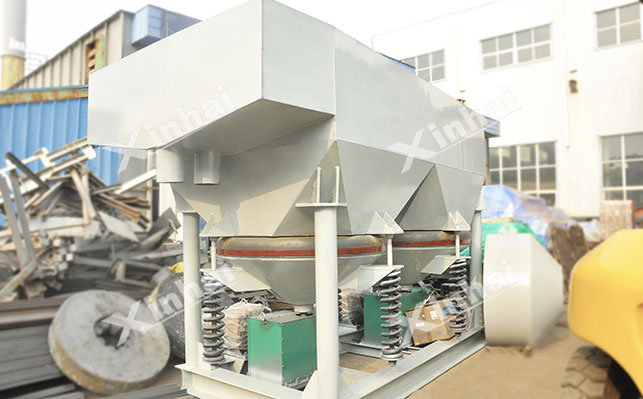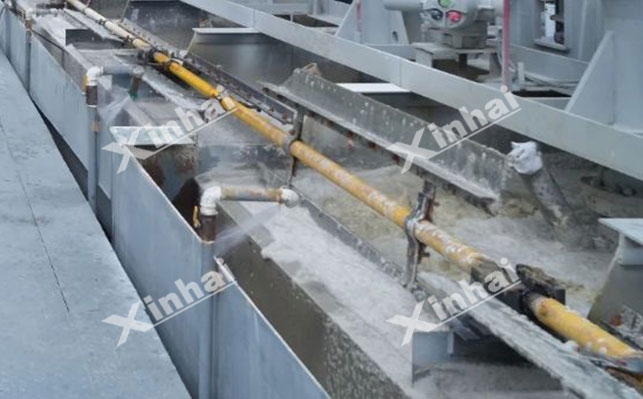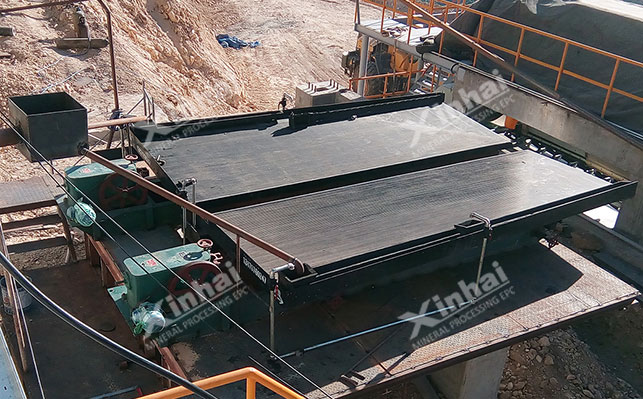
15311826613
Click to add WeChatMica is a layered hydrous aluminosilicate mineral containing various elements such as potassium, aluminum, magnesium, iron, and lithium. It has applications in many industrial fields, and with technological development and industrial progress, the demand for mica continues to rise. This article provides a detailed introduction to mica ore beneficiation methods!
The beneficiation method for mica ore needs to be comprehensively selected based on the ore properties and target product requirements. Regardless of the method, the main purpose is to achieve effective separation of mica from gangue minerals. Common mica beneficiation methods mainly include hand sorting, gravity separation, and flotation.
Hand sorting is an ancient and traditional method. For pegmatite-type mica ore, where the crystals are intact and the flakes are large, separation can be achieved directly through manual picking. After ore mining, it is crushed and screened. Manual sorting is then performed on the qualified material to remove large pieces of mica that meet the specified dimensions.
Gravity separation mainly utilizes the density difference between mica and gangue minerals, achieving separation through centrifugal force or reciprocating gravity motion. However, pretreatment is required before gravity separation to amplify the density difference between minerals. After crushing and grinding, the raw ore is first layered using a vibrating screen to separate minerals of different particle sizes according to grade. Then, a suitable gravity separation method is selected based on the mineral particle size.

Shaking Table: Suitable for 1~3mm particle size, using inclined water flow and table surface vibration to enrich mica in the concentrate area on the table surface;
Jig: Suitable for 3~10mm coarse particle size, utilizing vertical alternating water flow, mica, due to its flaky morphology, has high resistance in water and is easily carried to the upper concentrate layer by the water flow, while gangue sinks to become tailings;
Spiral Sluice: Suitable for -1mm fine particle size, using the combined action of centrifugal force and gravity to retain and enrich mica inside the sluice.

When mica is tightly embedded with gangue or other methods cannot achieve effective recovery, flotation is usually used for enrichment. Mica flotation utilizes the difference in surface properties between mica minerals and other minerals. By introducing reagents, the surface properties of the minerals are changed, making them hydrophobic or hydrophilic. The hydrophilic substances adhere to the flotation surface and float to the surface, thus achieving effective separation. Commonly used reagents are as follows:
Collectors: Amine reagents, mainly through electrostatic adsorption, adhere to the surface of mica, making it hydrophobic;
Adjusting agents: Sulfuric acid or hydrochloric acid, adjust the pH of the slurry to acidic (3~5), enhancing its selectivity;
Inhibitors: Water glass, inhibits the floatability of gangue minerals such as quartz and feldspar.
Pegmatite-type mica deposits often contain large mica crystals, sparsely embedded, and coexist with gangue minerals such as quartz and feldspar. The ore body has good integrity and is relatively large in scale.
Mining: The primary methods used are open-pit mining (shallow) + shallow-hole ore-holding (deep), prioritizing the protection of large, intact mica crystals. Blasting employs a "more holes, less explosives" technique.
Mineral Processing: The common methods are hand sorting + gravity separation. Large mica crystals are first manually sorted out. The remaining slag is crushed and classified, then gravity separated using a shaking table to recover fragmented mica, achieving "large crystals first, fragmented mica effectively recovered."

Sedimentary mica deposits are mostly gently dipping, thin-layered ore bodies. The mica is finely intercalated (flask diameter mostly<1cm), closely associated with clay, quartz, and other minerals, and the boundary between the ore and the surrounding rock is relatively indistinct.
Mining: Room-and-pillar mining is generally suitable. During mining, mechanical crushing should be avoided to prevent the mica flakes from fracturing.
Mineral Processing: Primarily using flotation, with dodecylamine as the collector, pH adjusted to 3-5, to assist in classification and desliming, and recovery of fine-grained mica.

Weathered residual mica ore is loose, with high separation between mica and gangue, mixed flake sizes, and a thin overburden layer, mostly distributed at the surface or in shallow areas.
Mining: Suitable for open-pit mining + manual sorting, no blasting required, direct excavation followed by screening.
Mineral Processing: Commonly used methods include screening and air separation. After screening, qualified materials are separated from gangue by utilizing differences in air resistance. In water-scarce areas, jigging gravity separation can be used as an auxiliary operation.
Xinhai Mining Engineering Construction General Contracting has a Class A qualification and extensive experience in mica mineral processing. It can provide turnkey services for various types of mica mines, including mine technical consulting and experimental research and design, complete equipment manufacturing and procurement, engineering construction, installation, commissioning and delivery, mine construction management, mine production operation management and services.